The Use of Wireline Logging Tools for Unconventional Resources
Wireline logging helps gather important information concerning underground formations. In the oil and gas sector, wireline logging, especially, contributes to capturing data within the subsurface structures, even the unconventional resources like oil shale, tight sands and coalbed methane. Even though wireline logging assists in capturing subsurface data, it still faces restrictions, particularly within unconventional resources. These challenges demand more specialized advanced wireline logging tools capable of providing accurate and reliable measurements needed to facilitate efficient exploration and production.

Understanding Wireline Logging in Unconventional Reservoirs
Recording data on the subterranean rock formations, fluids, and other properties of the formations entails the lowering of specialized tools into a wellbore through a cable, which is referred to as wireline logging tools. This information allows geologists and engineers to make there strategic choices concerning the evaluation of the reservoir, the completion and production of the well. This is especially the case in the unconventional ones, as rock formations cover those that are typically heterogeneous and less permeable. Optimal data acquisition becomes necessary to facilitate the streamlining of production processes and effective resource recovery.

Challenges of Unconventional Resources
This chart summarizes the multifaceted challenges encountered when developing unconventional resources. Each of these factors requires specific techniques and wireline logging tools to ensure successful reservoir evaluation and management.
| Challenge | Description |
| Low Permeability | Unconventional reservoirs have low permeability, making it difficult for hydrocarbons to flow naturally. |
| Complex Lithology | These reservoirs often have heterogeneous rock formations, which complicates the prediction of hydrocarbon distribution. |
| Fracture Network Complexity | Natural and induced fractures can be complex, and their behavior affects fluid flow, making fracture evaluation crucial. |
| Hydraulic Fracturing Needs | Unconventional resources require hydraulic fracturing to enhance permeability and allow for production, which demands careful planning and monitoring. |
| Fluid Dynamics | The behavior of fluids in unconventional reservoirs is often more difficult to predict due to the tight pore structure and varying fluid types. |
| High Pressure and Temperature Variations | Unconventional reservoirs often experience extreme pressure and temperature conditions, which require specialized equipment for safe operation. |
| Resource Heterogeneity | Variations in porosity, permeability, and fluid content across the reservoir require precise, high-resolution measurements to optimize production strategies. |
| Data Integration and Modeling | The integration of various data types (e.g., seismic, well logs, pressure data) into accurate reservoir models is complex but necessary for efficient resource extraction. |

Key Wireline Logging Tools for Unconventional Resources
Advanced wireline logging tools are required to obtain high-resolution data and accurately assess the reservoir’s potential for the exploration and production of unconventional resources.
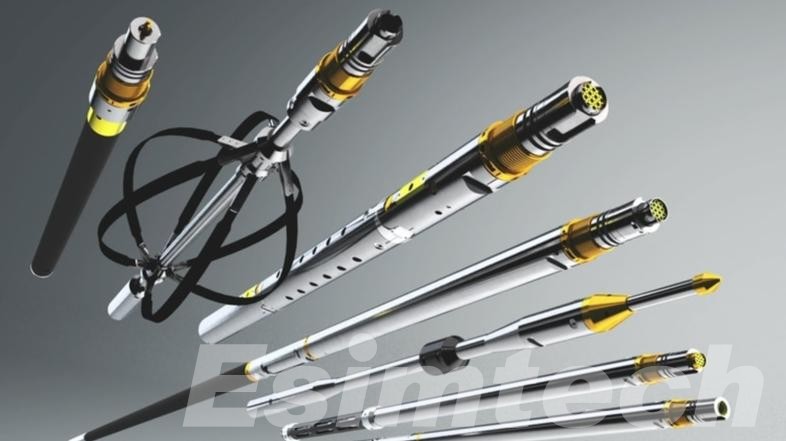
1. Gamma Ray Log (GR)
The gamma ray log is highly prolific gamma ray logs are among the first tools employed to the wireline logging process, and consequently. are deeply instrumental to the gamma ray logs are the only method. And is however, and still continues to be . In the field of unconventional resource economics. It is economics. It plays the During gamma ray logs is to differentiate shale and non shale types of rock. Of the rock types, shale is the only one which constitutes high levels of radioactivity. On the other hand, sandstones and carbonates do not. Due to these properties of shale, gamma ray logs can be used in the identification of inorganic rich shale. These zones are normally the prime zones to be targeted in unconventional reservoirs. The gamma ray logs enable demarcation of the different zones which comprise a targeted formation, and also serves in the identification of zones in the formation which can be referred to as reservoirs.

2. Resistivity Logs
Resistivity logs measure the velocity of which plasma can flow through the formation, and is correlated to fluid. In unconventional resources, the other tools assist in locating the resources present . The presence of hydro in tight formations is highly. In addition, these tools is used to determine the economic significance of a formation. For unconventional resources, Resistivity logs are highly used in formations with low permeability and complex fluid dynamics. In addition. Resistivity logs can . These logs are important as they assist in determining the economic viability of a formation.
3. Density and Neutron Porosity Logs
One of the prime characteristics that define a reservoir’s ability to hold hydrocarbons is porosity. To determine the porosity of unconventional formations, density log and neutron porosity log are essential. Density porosity is determined by the bulk density of the formation, and neutron porosity is determined from the hydrogen content of the formation. In unconventional reservoirs where pore configuration can vary greatly, the two logs of porosity provide synergistic information that leads to a more precise estimation of the infit volume of pores in the formation for hydrocarbons. with these logs, greater distinctions can be made between the zones of gas, oil, and water in the formation.

4. Nuclear Magnetic Resonance (NMR) Logging
Nuclear Magnetic Resonance logging provides unparalleled ease and efficiency when assessing porosity, fluid mobility, and fluid composition of unconventional reservoirs. Working with magnetic resonance, NMR determines free and bound water content, as well as detailed statistical information about the distribution and permeability of porosities. NMR logging offers exceptional value and efficiency when pore sizes are low and irregular, as is the case with shale. Ultimately, NMR logging enables operators to quantify the fluid recoverability in a reservoir, and is critical to determining the reservoir’s flow potential. This technology is foundational in the field of NMR logging in evaluating the design of hydraulic fracturing and the operational management of a reservoir.
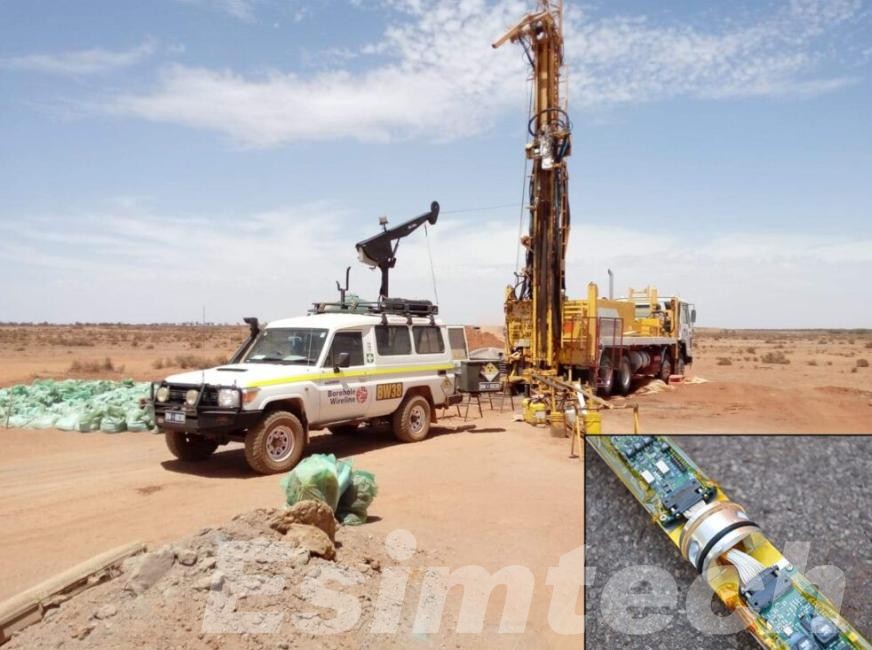
5. Acoustic and Ultrasonic Logs
Measuring the speed of sound waves as they go through the formation is what acoustic and ultrasonic logs do. These measurements illuminate varying mechanical properties of the rock (e.g., porosity, stiffness, and fractures). Because fractures are one of the most influential features affecting permeability in unconventional resources, acoustic logs are apt for evaluating the fracture networks and assessing fracture density and orientation. For small fractures, high-resolution ultrasonic logs are better suited for evaluating the integrity of the wellbore and assessing fractures. These tools are essential for optimizing fracture mapping and for refining the design of hydraulic fracturing treatments.
6. Micro-Resistivity and Image Logs
Micro-resistivity and image logs help operators better capture the important geological features of the formation with high-resolution datasets. These logs help measure small-scale variations in resistivity along the wellbore, which reveals detailed features of the formation. Image logs provide detailed visual images of the borehole wall so operators can document the geological features such as fractures, bedding planes, and various other features. In unconventional reservoirs, where fluid flow is controlled by fractures and the heterogeneous nature of the rock, these tools are vital for evaluating the fracture network and enabling hydraulic fracturing.
7. Formation Tester and Pressure Logging Tools
Formation testers and pressure logging tools measure pressure and fluid make-ups within the reservoir using these tools. These tools let operators directly sample the formation and evaluate the formation pressure profile. Formation testers quantify the formation pressure and permeability and determine the presence of hydrocarbons and water. Logging tools determine the flow characteristics and the optimal techniques for well completion and production by predicting the pressure within the reservoir over time. This data is particularly useful for unconventional resources where pressure varies significantly and fluid distribution is not homogeneous.
8. Borehole Imaging and Mapping Tools
Borehole imaging tools, including ultrasonic and resistivity-based imaging systems, provide high-definition images of the wellbore wall and help identify fractures, lithological variations, and other structural features of the reservoir. These systems are very valuable in unconventional formations where naturally occurring fractures and indused fractures (via hydraulic fracturing) drastically alter reservoir permeability. The high definition walls assist in orienting and spacing and determining the connectivity of operator mapped fractures, which increases efficiency in hydraulic fracturing placement and ultimate well performance.
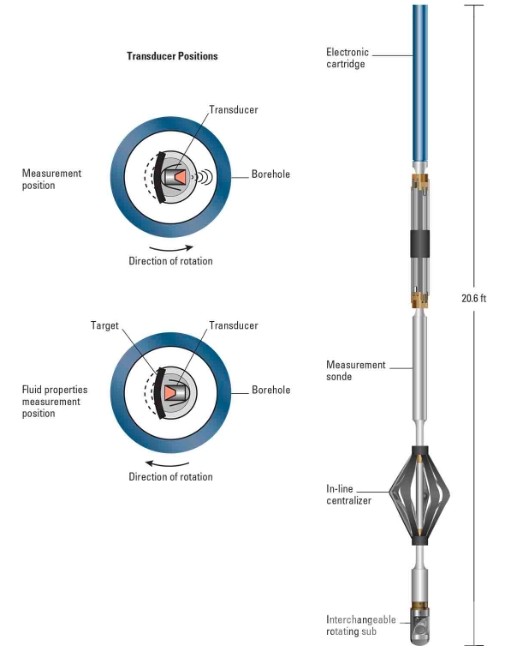
9. Production Logging Tools
Production logging tools assist in the visualization of the wellbore in motion during production and are valuable in determining the effectiveness of hydraulic fracturing and wellbore fluid (oil, gas, water) distriburing monitoring. In unconventional resources, production logging is valuable in delineating the contribution of individual zones in multi-stage fractured wells and verifying the zones which are likely candidates for re-stimulation or even other interventions for production maximization.
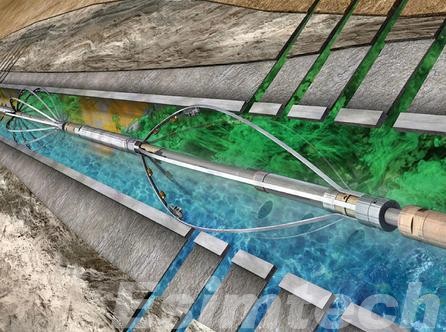
Applications of Wireline Logging Tools in Unconventional Resource Exploration
This chart highlights how various wireline logging tools are applied to different aspects of unconventional resource exploration, from initial reservoir characterization to ongoing production optimization.
| Application | Wireline Logging Tools | Description |
| Reservoir Characterization | Gamma Ray Log (GR), Resistivity Logs, Density/Neutron Porosity Logs | Used to assess lithology, porosity, and fluid content, helping identify hydrocarbon-rich zones in shale and tight formations. |
| Hydrocarbon Identification | Resistivity Logs, Gamma Ray Log, NMR Logging | Identifies the presence of hydrocarbons (oil, gas, or water) by measuring resistivity and gamma radiation, critical for mapping potential resource zones. |
| Fracture Evaluation | Acoustic Logs, Image Logs, Micro-Resistivity Logs | Provides insights into fracture networks, their orientation, density, and impact on reservoir permeability. This helps optimize hydraulic fracturing design. |
| Porosity and Permeability Assessment | Density/Neutron Porosity Logs, NMR Logging | Measures the pore space and fluid flow capacity of the reservoir, essential for estimating storage potential and flow rates. |
| Wellbore Integrity Monitoring | Acoustic Logs, Ultrasonic Logs | Monitors the condition of the wellbore and identifies any issues with well integrity, which could affect production efficiency in unconventional resources. |
| Fluid Mobility and Reservoir Connectivity | NMR Logging, Pressure Logging Tools, Formation Testers | Measures fluid mobility, identifies free vs. bound fluids, and evaluates reservoir pressure, which aids in understanding how fluids will flow during production. |
| Hydraulic Fracture Design Optimization | Acoustic Logs, Image Logs, Micro-Resistivity Logs | Assesses natural and induced fracture networks, enabling better planning of hydraulic fracture placement and improving production rates. |
| Pressure and Fluid Sampling | Formation Testers, Pressure Logging Tools | Allows for direct sampling of reservoir fluids and measurement of formation pressure, helping to evaluate reservoir quality and optimize production techniques. |
| Production Monitoring and Optimization | Production Logging Tools | Monitors the flow of hydrocarbons (oil, gas, and water) through the wellbore, identifying zones contributing to production and those requiring re-stimulation or intervention. |
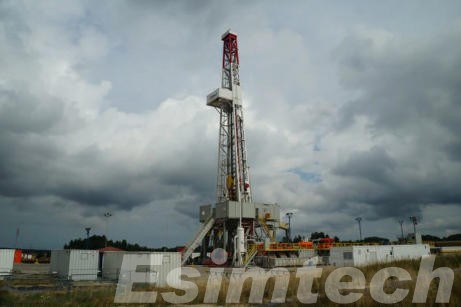
Future Outlook of the Use of Wireline Logging Tools in Unconventional Resources
New technologies and methodologies are being developed to improve the precision, efficiency, and cost-effectiveness of data collection for wireline logging tools, while also addressing the unique challenges presented by unconventional reservoirs.
- Advancements in Resolution and Accuracy
Wireline logging tools have provided invaluable data on reservoir properties, such as porosity, permeability, and fluid content, for a considerable time. As unconventional resources become more and more complex, resource porosity, permeability, fluid content, and more complex resource fluid interactions. There is a compelling demand for greater accuracy and resolution in resource characterization. Increased resolution in resource assessment, particularly in complexity characterization, will be the focus for the future of wireline logging tools. A predominance of these complexities may be found within tight formations and shales micro-porosity, small-scale fractures, and a micro-structure heterogeneity.
Future sensors will most likely include high-definition imaging, advanced acoustic technology, and other components that will allow users to collect advanced, high-quality data regarding micro-cracks, voids, and cracks within rock formations. These sensors will record information needed to analyze the subtle changes within a given rock formation that may effect the flow and movement of fluids within the rock. This information will lead to increasing the value of the modeling, providing the ability to optimize operational plans for the given formation.
- Real-Time Data Transmission
One of the most promising trends for the future of wireline logging in unconventional resources is the shift toward real-time data transmission. As the industry becomes more focused on speed and efficiency, the ability to transmit data instantly from the wellbore to surface facilities will significantly improve decision-making processes.
The integration of real-time data collection with wireline tools and digital logging tech will further transformations in operational approaches, providing a clear economic advantage. Users will be able to make adjustments instantaneously when the data indicates changes in subsurface conditions or wellbore state during a drilling or hydraulic fracturing sequence. The combination of predictive analytics and real-time data will minimize time lost in operations, but will also lead to greater advancements in management of the subsurface formations.
- Simulation Technologies
This chart highlights the integration of wireline logging simulation, enabling more accurate predictions, real-time adjustments, and optimized reservoir management in unconventional resource exploration.
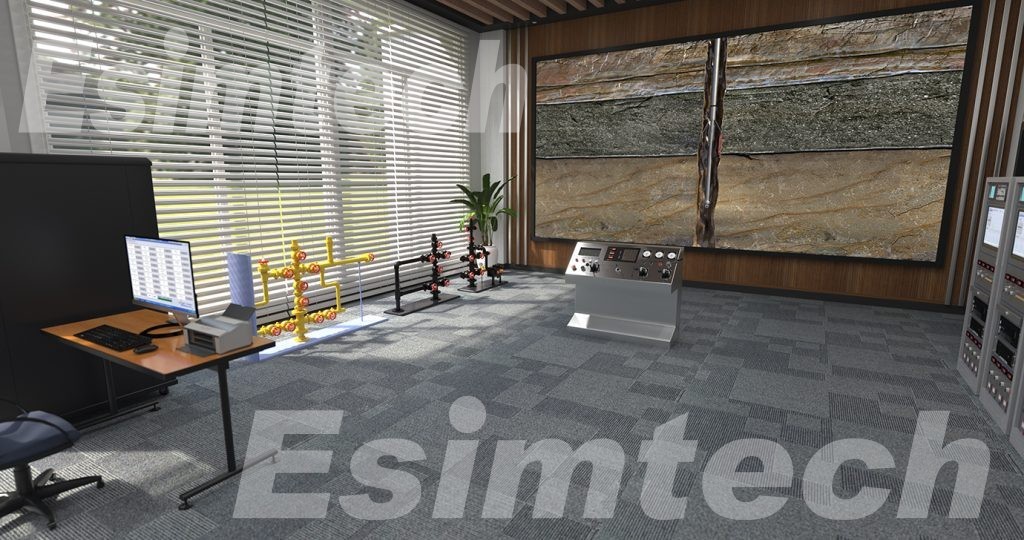
| Simulation Technology | Wireline Logging Tools Involved | Impact |
| Reservoir Simulation | Resistivity Logs, Porosity Logs, NMR Logs | Reservoir simulation are updated with real-time data from wireline tools to simulate fluid behavior, fracture propagation, and overall reservoir performance. This helps in designing optimal well placements and predicting resource recovery. |
| Real-Time Data Integration | All Wireline Logging Tools (e.g., Gamma Ray, Acoustic, NMR) | Real-time transmission of data from wireline tools is integrated with simulation models, enabling dynamic updates of reservoir models, improving decision-making during drilling, fracturing, and production. |
| Fracture Propagation Simulation | Acoustic Logs, Micro-Resistivity Logs, Image Logs | Simulation technologies simulate fracture growth and fluid flow in response to hydraulic fracturing. This helps optimize fracture placement and design for better reservoir contact and higher production efficiency. |
| Hydraulic Fracturing Simulation | Acoustic Logs, Pressure Logging, Formation Testers | Simulation tools model the impact of hydraulic fracturing treatments on the reservoir, assisting in optimizing fracturing fluid types, pressures, and schedules to improve recovery rates. |
| Digital Twin of the Reservoir | All Wireline Logging Tools | A digital replica of the reservoir is created, allowing operators to simulate different operational scenarios, predict future reservoir performance, and adjust strategies in real-time based on wireline data. |
| Geomechanical Simulation | Acoustic Logs, Image Logs, Pressure Logging Tools | Geomechanical models simulate rock behavior under different pressure conditions, improving understanding of formation stability, fracture patterns, and optimal wellbore integrity during operations. |
| Fluid Flow and Migration Modeling | NMR Logs, Pressure Logging Tools, Formation Testers | Simulation tools model fluid movement and migration within the reservoir, based on data from wireline logs, to predict how fluids will flow during production and optimize recovery. |

- Multi-Tool Integration
As unconventional reservoirs heterogeneity increases, multi tool integration will be essential. The future of wireline logging will incorporate the use of several tools at once to collect data in a more comprehensive manner.
For example, in real time, porosity logs, resistivity logs, and NMR logs can be integrated simultaneously to assess the reservoir’s storage and fluid mobility. Further, the integration of image logs and acoustic logs will focus on the detailed mapping of fractures and analysis of the rock properties. The combination of data will enhance the quality of reservoir models, fracturing designs and well placements.
In addition, the fully automated and real time logging of data will improve operational efficiency. The streamlined robotic wireline logging systems will be able to deploy tools, calibrate them, and log data in a manner that provides enhanced safety and reduces human error.
- Enhanced Environmental and Safety Monitoring
When it comes to the exploration of unconventional resources, environmental and safety aspects are of increased importance. Since drilling and production activities are reaching more remote and sensitive areas, and so the wireline logging tools are likely to evolve to address these issues. The future of wireline logging will incorporate tools that measure the properties of the reservoirs being logged and also monitor the environment in real time for the emission of gases, temperature, and pressure changes.
For instance, environment-conscious logging tools that are able to detect and quantify the amounts of fugitive gases and other pollutants will be useful in achieving and maintaining compliance with environment protection laws to mitigate the ecological impact of unconventional resource extraction.
In addition, the operational safety aspects of wireline logging tools will be paramount in allowing the safe logging of the propertied of reservoirs under extreme conditions of temperature, pressure, or other hazards. Future tools could incorporate safety devices that monitor for wellbore failures (for instance, blowouts or loss of casing), and that warn operators of other likely major hazards.
- Miniaturization and Portability of Logging Tools
Logging tool miniaturization is another of the trends for the future in the field of wireline logging in unconventional resources. The need for compact, lightweight tools that can be easily deployed and transported into remote and/or difficult regions is becoming greater. These miniaturized tools will be more efficient and cost effective, lowering the operational costs related to wireline logging activities.
As an example, there is the potential to produce small-scale micro-resistivity sensors along with portable NMR devices that can perform rapid measurements of the properties of a reservoir and perform localized measurements without the necessity of bulky, large, and heavy equipment. These devices would be extremely effective for obtaining rapid assessments in exploration wells. This would provide essential data for early decision making and eliminate prolonged downtimes between operations.

- Enhanced Integration with Hydraulic Fracturing Operations
The future of wireline logging will be integrated with the development of hydraulic fracturing operations. Since hydraulic fracturing is the main method of extraction for unconventional resources, the wireline tools will be of greater use in enhancing the design of the fracking operations.
Operators will be able to refine aspects of the fracking process with the help of real-time data from wireline logging tools pertaining to fracture attributes, pore structure, and fluid distributions. With the ability to provide more accurate fracture placement, geometry, and fluid distribution, fracture mapping tools and micro-seismic monitoring systems will become standard in most fracking operations. The combined effect of these tools will enhance the efficiency of fracking operations and minimize the environmental consequences by optimizing resource recovery.
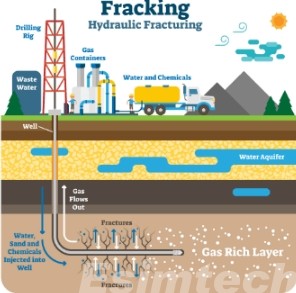
Summary
Understanding unconventional resources and optimizing their wireline logging tools are irreplaceable. Wireline logging tools are central to the efficient exploration and production of unconventional oil and gas by offering subsurface detail, enhancing well planning and improving fracture design. The ongoing advancements in technology will ensure that these tools are among the first to be rolled out to maximize the potential of difficult resources.
